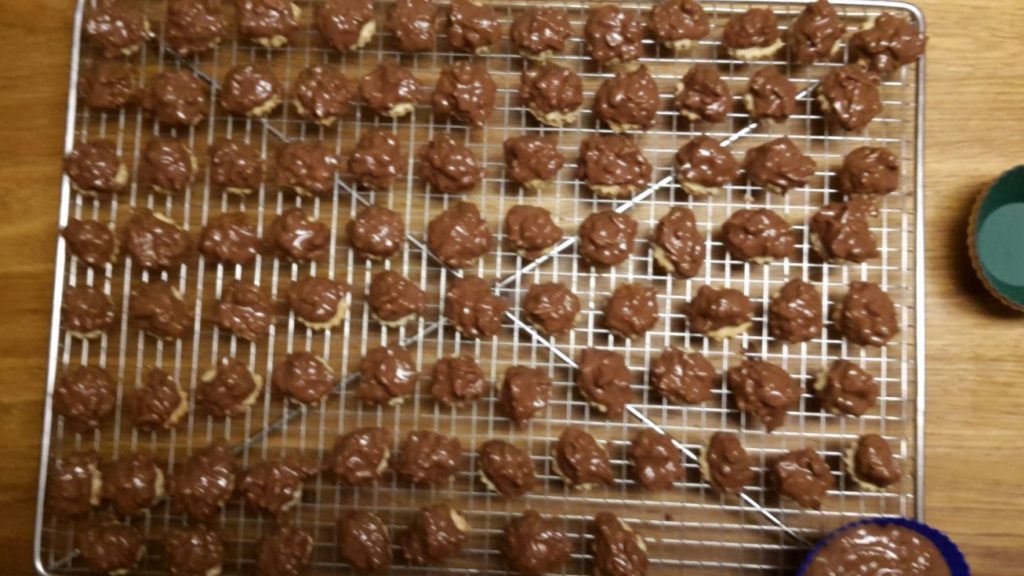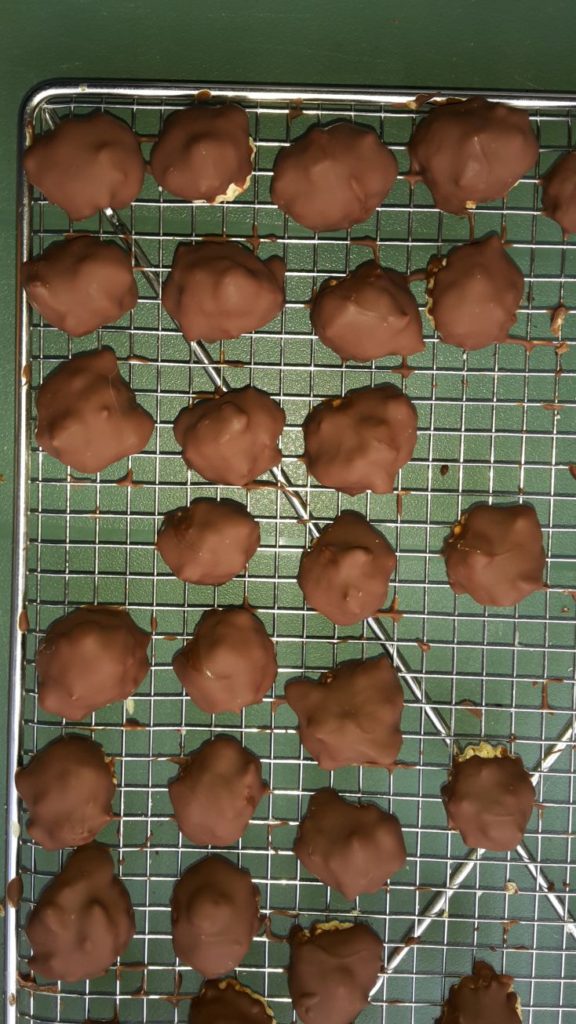When I was a child, we'd visit my paternal grandmother for the seasonal holidays - Easter and Christmas. She lived not too far away, but too far for just a casual visit; in a small house that was rather simple and old-fashioned. I remember the very small toilet, which had no sink; you had to go into the kitchen to wash your hands, where there was a small sink, and I also remember the water being quite, quite cold.
My grandmother always served us food, all home-cooked and home-made from scratch, and very different from what my mum made. She came from Czechoslovakia, and that did show in her cooking and baking. She'd also serve us cake for coffee, and there was always whipped cream, and hot chocolate for the children. (True to her geographical roots, by the way, the coffee was very, very strong to a German's taste.) She took a lot of pride in her cooking and baking - and the baking, oh, the baking, there were some glorious things that are firmly connected to childhood birthday and holiday memories. One of them was a special kind of layered cake she'd make on my request - it was my firm favourite, and it was called "Schnittchen". Another happy memory was of her Christmas cookies, which we'd get to take home after our visit: several large tins, filled with a variety of cookies, all lovingly hand-made. There were a few staples that you'd always find, each and every year, and then some varieties that might be there or might not. Those cookies were part of Christmas for me just like the tree, and the visit, and the other things that make the festivity what it is.
Years go on, though, and people get older, and she eventually suffered a stroke and could not live at home on her own anymore - she moved into an old people's home, and that stroke also set an end to her baking and cooking. So... I took over.
Unfortunately, the fact that she took a lot of pride in her kitchen skills came with a downside: She would not share recipes. If asked, she'd say "oh you take this and that and a few eggs and then you make the dough and then you bake it" - and refuse to give you proper amounts, or ingredients, or descriptions. So I never knew how she made the Schnittchen, or the many different cookies she'd bake. I remembered the staples, though, and some of the special ones. So I tried to re-create all the ones that were important to me, with mixed success. Some, I'm sure, have a very different dough from what she used, but for me, the fillings are the important bit, and the fact that there are cookies coated with chocolate and filled with praliné, and ones also chocolate-coated and filled with redcurrant jelly, and Vanillekipferl, and then there's walnut baisers. I also remember that she'd make apples and pears that had a sugar glaze, but I never recreated these - they were mostly sweet, my parents didn't much care for that variety, and so they got relegated to memory only status, not resurrected.
For years now, I've made these important-to-me varieties. Then, after my gran died, some of her recipe collection fell into my hands... and I actually found a cookie recipe that she had used, with her notations on the journal cutout with the recipe. It was one of my favourites among the not-there-every-time cookies, and it's called Nougatmützchen (little praliné hats). When I made these and then ate the first one, it was like a time travel back - and a very, very emotional moment ensued.
Making those is a three-step process, it involves a lot of praliné and chocolate, it is rather messy... and, if you ask me, totally worth it even if you don't have the deep historical connection to these cookies that I have. Also, because my gran's refusal taught me that sharing your recipes is important, it's also the recipe I'll share with you this year.
Nougatmützchen:
Cookie basis:
150 g flour
3 g baking powder
50 g sugar
1 pack vanilla sugar
1 pack rum aroma
pinch of salt
2 tablespoons milk
50 g butter
praliné mix:
400 g praliné (This is the German "Nougat" or "Nuß-Nougat", a soft concoction from hazelnuts and cocoa or chocolate. If you've never heard about this before, you can find more info here.)
100 g almond splinters (I usually take almond flakes and cut them smaller with a knife)
c 50-80 g of crushed cookies
plus milk chocolate to cover (c 200-250 g)
Make a pastry dough from the dough ingredients; let the dough sit in the cool for a while to rest, then roll out (about 2 mm of thickness) and cut out circles; the original recipe suggests 4 cm diameter, mine are a bit smaller. Bake in a pre-heated fan oven for 8 minutes at 175° C.
The original recipe now tells you to crush one third of the finished cookies into fine crumbs. I prefer to bake some of the bits that are left over between the circles that I cut out, because I'm lazy that way. I also use more of the similar leftover bits (you know that stage when your dough leftover bits are not really worth rolling out again? perfect for this) from the other cookie dough.
Warm the praliné and stir it until smooth, then mix in the cookie crumbs plus the almonds.

Now comes the messy bit, part one: each of the round cookies should get a mound of the praliné mass on top. It helps if the mass is not too warm.

Let them sit in a cool place until the praliné has firmed up; melt up the chocolate. This is messy bit, part two: Cover the tops with chocolate. I do this by grasping each cookie with two fingers, dipping it into the molten choc, then use a third finger or one of my second hand to turn them right side up again, then set it onto a rack to firm.

I get about 80-100 cookies out of this, depending on how thin I roll out the dough.
And that's your seasonal recipe for 2019. Let me know if you made it - and how you liked it!
The other seasonal recipes that I blogged in the past are:
- Linzer Plätzchen
- Lemon Lozenges
- Chocolate-Coffee-Nut Spheroids
- Schokogongs (Chocolate THINGS) and how to make the praliné for filling them
- Marzipan-stuffed dates
- Gingerbread, without flour (Nuremberg type)
- Basic cookie dough (or five types of cookies from one batch of dough)
- Vanillekipferl (vanilla crescents)
- Spitzbuben (jam-filled cookies)







